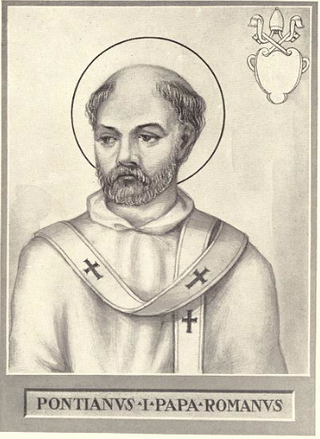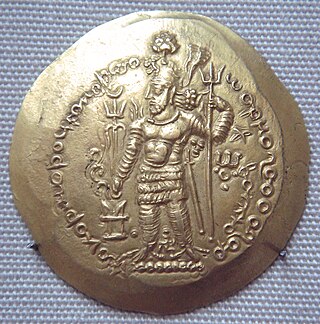The 380s decade ran from January 1, 380, to December 31, 389.
The 270s decade ran from January 1, 270, to December 31, 279.

Year 230 (CCXXX) was a common year starting on Friday of the Julian calendar. At the time, it was known as the Year of the Consulship of Agricola and Clementinus. The denomination 230 for this year has been used since the early medieval period, when the Anno Domini calendar era became the prevalent method in Europe for naming years.

Year 251 (CCLI) was a common year starting on Wednesday of the Julian calendar. At the time, in the Roman Empire, it was known as the Year of the Consulship of Traianus and Etruscus. The denomination 251 for this year has been used since the early medieval period, when the Anno Domini calendar era became the prevalent method in Europe for naming years.
The 230s decade ran from January 1, 230, to December 31, 239.
The 240s decade ran from January 1, 240, to December 31, 249.
The 250s was a decade that ran from January 1, 250, to December 31, 259.

Year 244 (CCXLIV) was a leap year starting on Monday of the Julian calendar. At the time, it was known as the Year of the Consulship of Armenius and Aemilianus. The denomination 244 for this year has been used since the early medieval period, when the Anno Domini calendar era became the prevalent method in Europe for naming years.
Year 243 (CCXLIII) was a common year starting on Sunday of the Julian calendar. At the time, it was known in Rome as the Year of the Consulship of Arrianus and Papus. The denomination 243 for this year has been used since the early medieval period, when the Anno Domini calendar era became the prevalent method in Europe for naming years.
Year 241 (CCXLI) was a common year starting on Friday of the Julian calendar. At the time, it was known as the Year of the Consulship of Gordianus and Pompeianus by the Romans. The denomination 241 for this year has been used since the early medieval period, when the Anno Domini calendar era became the prevalent method in Europe for naming years.

Year 272 (CCLXXII) was a leap year starting on Monday of the Julian calendar. At the time, it was known as the Year of the Consulship of Postumius and Veldumnianus. The denomination 272 for this year has been used since the early medieval period, when the Anno Domini calendar era became the prevalent method in Europe for naming years.

Year 260 (CCLX) was a leap year starting on Sunday of the Julian calendar. At the time, it was known as the Year of the Consulship of Saecularis and Donatus. The denomination 260 for this year has been used since the early medieval period, when the Anno Domini calendar era became the prevalent method in Europe for naming years.

Year 211 (CCXI) was a common year starting on Tuesday of the Julian calendar. At the time, in the Roman Empire it was known as the Year of the Consulship of Terentius and Bassus. The denomination 211 for this year has been used since the early medieval period, when the Anno Domini calendar era became the prevalent method in Europe for naming years.

Year 337 (CCCXXXVII) was a common year starting on Saturday of the Julian calendar. At the time, it was known as the Year of the Consulship of Felicianus and Titianus. The denomination 337 for this year has been used since the early medieval period, when the Anno Domini calendar era became the prevalent method in Europe for naming years.

Shapur I was the second Sasanian King of Kings of Iran. The precise dating of his reign is disputed, but it is generally agreed that he ruled from 240 to 270, with his father Ardashir I as co-regent until the death of the latter in 242. During his co-regency, he helped his father with the conquest and destruction of the city of Hatra, whose fall was facilitated, according to Islamic tradition, by the actions of his future wife al-Nadirah. Shapur also consolidated and expanded the empire of Ardashir I, waged war against the Roman Empire, and seized its cities of Nisibis and Carrhae while he was advancing as far as Roman Syria. Although he was defeated at the Battle of Resaena in 243 by Roman emperor Gordian III, he was the following year able to win the Battle of Misiche and force the new Roman emperor Philip the Arab to sign a favorable peace treaty that was regarded by the Romans as "a most shameful treaty".
The Battle of Resaena or Resaina, near present-day Ceylanpınar, Turkey, was fought in 243 between the forces of the Roman Empire, led by the Emperor Gordian III and the Praetorian Prefect Timesitheus against the Sasanian Empire's forces during the reign of Shapur I. The Romans were victorious.

The Sasanian Empire, officially Ērānšahr, was the last empire of ancient Iran. Named after the House of Sasan, it endured for over four centuries, from 224 to 651, making it the second longest-lived imperial Iranian dynasty after the directly preceding Arsacid dynasty of Parthia.

The Battle of Misiche, Mesiche, or Massice was fought between the Sasanians and the Romans in Misiche, Mesopotamia.

The Sassanid Empire or Sassanian Dynasty is the name used for the Persian dynasty which lasted from 224 to 651 AD.

The Mesopotamian campaigns of Ardashir I represented the first episode in a new period of wars between the Romans and Sasanids. The war between the Roman Empire, ruled by the Roman emperor Severus Alexander (222-235), and the Sasanian rule, led by Ardashir I (224-241), lasted for more than a decade, from 229 to 241 when the Sasanian ruler died and was replaced by his son, Shapur I.












